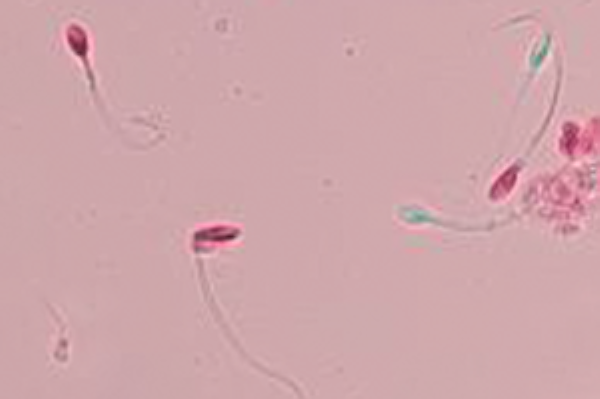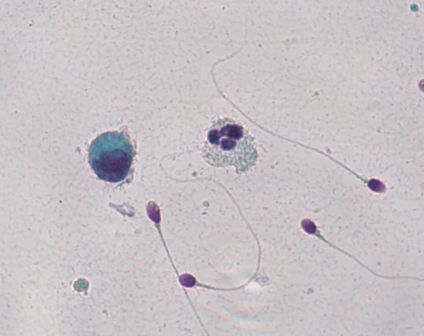August 16th, 2011 § § permalink
By Eve Feinberg, M.D.
Fertility Myths
Myth #1: Missionary position is best.
As long as intercourse is vaginal (and yes, strangely, I have had a few couples who had not grasped this detail prior to their first consultation), position does not matter. Sperm are incredible swimmers and studies have shown that within minutes of intercourse the sperm can be found within the fallopian tubes and will get to where they need to be expeditiously.
Myth #2: You should lie still for 30 minutes after intercourse with your legs in the air.
Sperm are incredible swimmers (see #1). It will not decrease your likelihood of conceiving if you use the bathroom or walk around within minutes of intercourse.
Myth # 3: I got pregnant and had an abortion in high school, so I am highly fertile.
Most high school students are highly fertile, but fertility declines with advancing age. Girls are born with a set number of eggs and over the course of a woman’s reproductive life, the number of eggs declines dramatically. There are several critical periods where the decline is more steep and after the age of 45, there is such little benefit to IVF using your own eggs, that most clinics will not perform IVF on a 45 year old woman attempting conception with her own eggs. On a good note, having had an abortion does not make you infertile.
Myth #4: I am a “young” 40.
Aging occurs at a variable rate when it comes to gray hair and wrinkles. Ovarian aging, unfortunately, is quite predictable. Your ovaries will never act younger than your chronological age. They may respond more robustly than expected and may give you a higher yield of eggs, but the quality of those eggs is linked to a woman’s age. And sadly, egg quality and quantity decrease markedly with advancing age.
Myth #5: If you relax, you will get pregnant.
There are very few cases where the sole cause of infertility or IVF success is stress. This is a common perception and often a hurtful thing to say to an infertile couple. Infertility is a medical condition with identifiable, organic causes in the majority of cases. There has not yet been a well designed study that shows the positive impact of stress reduction on conception success.
I hope you’ve enjoyed Fertility Myths (and my VERY FIRST) blog entry ever. I am excited to be on the blogosphere and welcome your comments or suggestions for new topics.
July 20th, 2011 § Comments Off on Needles and Sperm § permalink

A reader recently asked whether acupuncture helps sperm.
I have to admit I’m a Western thinker, but that doesn’t mean that I automatically dismiss anything Eastern. It does mean that, as is true of any treatment, I will want to see evidence of effectiveness before I believe that it works. The most compelling proof will include:
- A comparison of those patients who are treated and those who are not,
- Patients (and preferably doctors) who don’t know which patients are being treated and which are not,
- Statistics that demonstrate the chances that the conclusion is wrong,
- More than one study that says it is right.
A number of published studies report how sperm fares with acupuncture. One, published in Fertility and Sterility in 2009, described the use of a special device that either performed acupuncture or just looked like it did, so that patients did not know whether or not they were being treated. Comparing men who were actually treated to those who weren’t, the authors could say with around 95% confidence that motility after acupuncture increased about 10%. The authors didn’t observe an increase in sperm count, and semen volume decreased a little.
If effective, acupuncture would be a great treatment for men who need to improve motility. But first, I’d like to see a study similar to the one done in 2009, but from different investigators and showing similar results. Until then, I’d say acupuncture looks promising but needs a bit more study.
April 16th, 2011 § § permalink
After last week’s post about pus in semen, I thought that it might be helpful to describe another important sperm test, one that shows whether or not they’re alive.
Good sperm are alive. Not only do they swim, they live and breathe just as all living cells do. Some are dead, meaning that the ship is no longer sailing, and its motor and crew are gone.
One way of figuring out whether or not sperm are alive is to dip them in colored dye. A dead sperm can’t push the dye out of its body, but a live sperm can. In the picture, the sperm are stained with a pink dye called Eosin. The dead sperm are the ones that become pink, and the live sperm are the ones that push the dye outside and stay clear (a light bluish green in the photograph.)

The result of the test is typically described in the percentage of sperm that are alive, and of course, the more living sperm the better. But even when all of the sperm are dead, a condition called “necrospermia”, couples can still conceive using in-vitro fertilization with intra-cytoplasmic sperm injection.
That doctors can successfully use dead sperm with in-vitro fertilization illustrates a conundrum in reproductive medicine today. The ultimate barrier to fertilization is no longer the entire sperm’s health, but the quality of its DNA cargo. Unfortunately, we don’t yet have a way of knowing the condition of a single sperm’s DNA before inserting that sperm into an egg.
So if a man’s sperm don’t wiggle, the first thing to know is whether they’re alive and sluggish or whether they’re dead. A vital stain makes that distinction. But if they’re dead, a man shouldn’t despair. Dead sperm can still be used in intra-cytoplasmic sperm injection as long as their DNA is good. Unfortunately, the only way to know that right now is to inject the sperm and to see what happens.
April 4th, 2011 § § permalink
Your semen analysis results came back, and it says that you have a lot of white blood cells. What does it mean?

White blood cells are the body’s soldiers to fight invaders like bacteria and viruses, and their presence in semen might signal an infection. White cells also produce superoxide radicals, bullets that riddle sperm and its precious DNA cargo.
Here’s the problem: you might not have white blood cells at all. If you put semen under the microscope, white blood cells look exactly like immature sperm cells that aren’t a problem at all. A technician needs to stain the cells to see which cells are the bad actors. In the picture, an innocuous cell is on the left, and to its right lies an angry white blood cell. It’s easy to tell the difference because they’ve been stained. But without the coloration from staining, it would be impossible to say which was which.
Unfortunately, not all labs routinely stain semen if large round cells cells are present in high amounts. Specialized semen analysis labs typically will, but general laboratories performing many different kinds of tests may not.
If your test, with staining, confirms that you do have an unhealthy amount of white blood cells in the semen, what can you do? Culturing semen in the lab doesn’t usually reveal the bacterial invaders. The prostate turns out to be remarkably good at hiding infection, making it a difficult job to find the bug causing the problem. Doctors often try a course of broad spectrum antibiotics to attack anything that may be lurking. Another strategy is to use an antioxidant like coenzyme Q10 to protect the sperm from the white blood cell’s superoxide radicals.
But first you have to know if you’re dealing with white blood cells.
March 24th, 2011 § Comments Off on Big Day for Growing Sperm § permalink
It’s a big day for sperm science. In the journal Nature today, scientists from Japan describe how they were able to mature mouse sperm in a petri dish outside of the testis.
The sperm assembly line is a complicated series of steps that takes about two months from start to finish. Sperm start off as big, round immature cells called “spermatogonia” whose main job is to multiply. At some point, cells decide to turn into full-fledged sperm, becoming cells known as “spermatocytes”. A spermatocyte splits into halves, becoming a “spermatid” in a process called meiosis, which will allow its precious genetic cargo ultimately to combine with its complementary other half waiting in an egg. The spermatid half cells finally transform their shape, growing propellers, outboard motors and egg-digesting caps in becoming “spermatozoa”.
Until now, scientists were unable to get immature sperm cells to grow outside the body into those exquisitely shaped torpedo half cells. That’s where Takuya Sato and fellow scientists have succeeded. By carefully controlling the conditions for the growing sperm’s bed, these scientists discovered how to make mature sperm outside the body.
The practical implications are enormous. Sperm can be frozen before chemotherapy to spare a man’s fertility, but only from an adult man already making mature sperm. We don’t yet have a similar way to preserve the future fertility of a boy who has yet to go through puberty, and this discovery may someday allow doctors to freeze a small piece of testis from a boy about to have chemotherapy and then mature his sperm in a petri dish later in his life. For men with “maturation arrest“, where the sperm assembly line stops midstream, it might be possible to grow their sperm to completion in a petri dish, and use the grown sperm in in-vitro fertilization.
The distance between Sato and his fellow scientists’ discovery and practical use is not small. Men are different than mice, and trying to shepherd science into the doctor’s office always brings unforeseen challenges. But this discovery is a big leap for sperm science.



